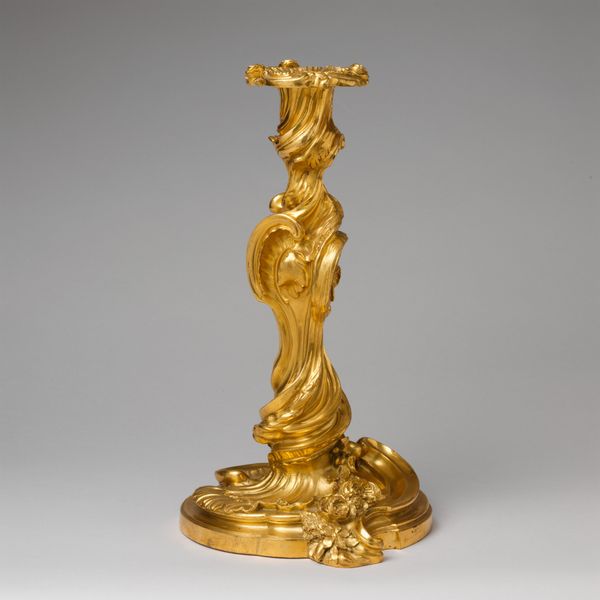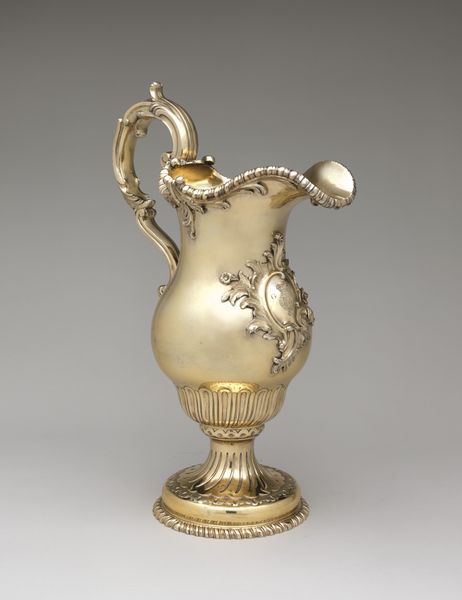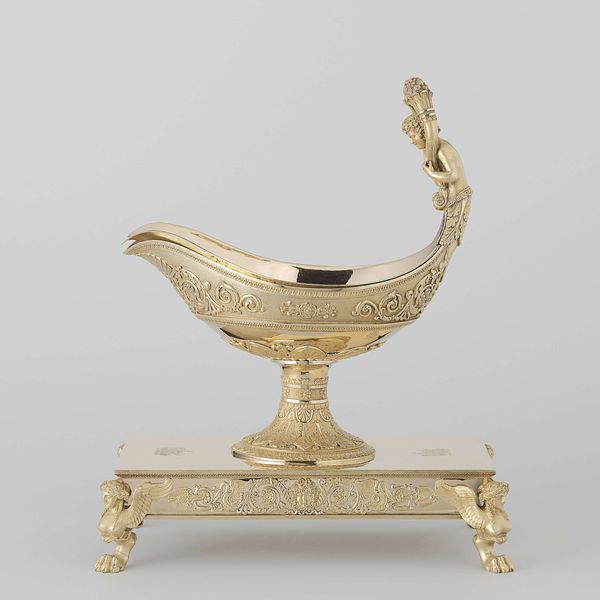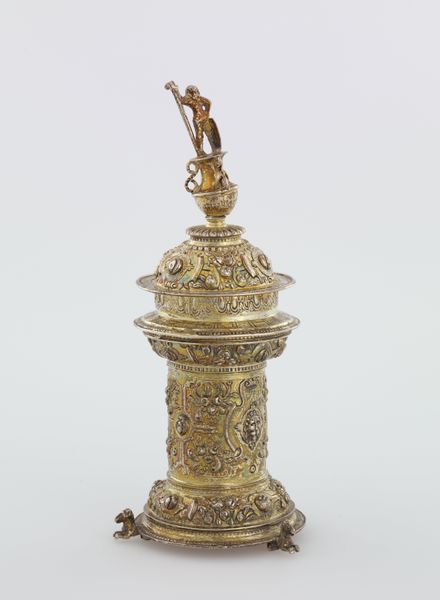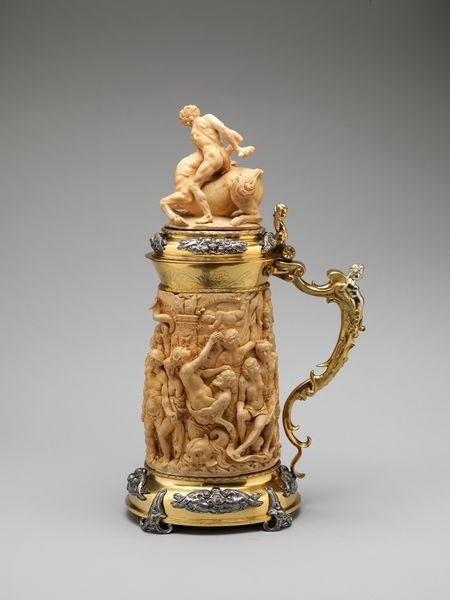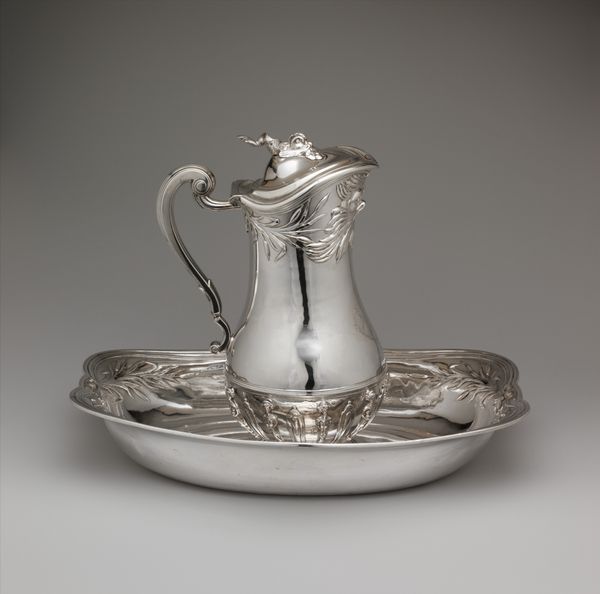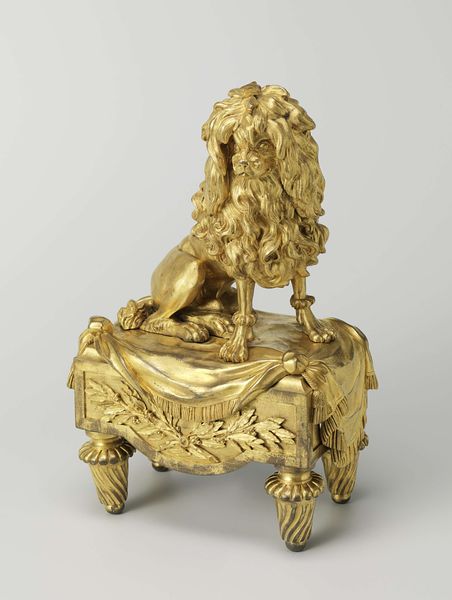
silver, metal, gold, bronze, metalwork-silver, sculpture
#
neoclacissism
#
silver
#
metal
#
sculpture
#
gold
#
bronze
#
metalwork-silver
#
sculpture
#
decorative-art
Dimensions: 15 3/16 × 12 in. (38.6 × 30.5 cm)
Copyright: Public Domain
Curator: Let’s take a moment to observe this magnificent cruet frame, one of a pair, crafted between 1812 and 1822. It’s attributed to Jean-Baptiste-Claude Odiot, a master silversmith of the Neoclassical period. Editor: My immediate impression is of opulence; the interplay of gold, silver, and crystal is truly dazzling, though bordering on excessive. What exactly would one put in it? Curator: Traditionally, these frames would hold oil and vinegar. What’s fascinating to me is how Odiot has integrated symbolic meaning into the very structure of this functional object. Note the goddess figure. Editor: Yes, standing there draped. Given the era, one might assume it is Venus or similar classical archetype? How would that intersect with daily function, let alone social function? I’d say the labor necessary to extract, smelt, and work these metals suggests immense resources funneled toward creating these objects. It begs the question: For whom, and at what cost? Curator: Indeed, its extravagance points towards an aristocratic clientele, those for whom display was as essential as function. Semiotically, each element speaks volumes – the goddess embodies refinement, beauty and allusions to an idealized past, whereas, the silver, gold and even crystal reflects luxury and elevated status. Editor: Look at the griffins too. I wonder about the artisans, their skill certainly evident. It's quite important to acknowledge the socioeconomic dynamics involved in such commissions. From miners extracting the raw materials to the hands shaping the metal. Did Odiot dictate every detail, or did his team contribute? Curator: That’s an essential consideration – art always emerges from specific conditions, involving collaborative labour. Still, Odiot’s compositional mastery cannot be denied, in the symmetry and balance. Editor: Symmetry in service of…salad dressing. Food vessels rendered like divine objects feels absurd given our moment of reckoning on resource extraction. It feels tone deaf for the everyday object and luxury, to collide. Curator: Well, perhaps recognizing that tension is precisely how we can best engage with objects like these. Thank you. Editor: Indeed, hopefully, through critically examining the artistry, and means by which it became such, will help provide insight, and allow people to interpret it in modern times.
Comments
No comments
Be the first to comment and join the conversation on the ultimate creative platform.
